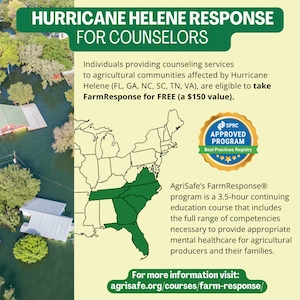Last updated on April 9th, 2024 at 05:56 pm
Respiratory Health Resources
Most of us take for granted that our lungs are going to do their job. We can get out of bed in the morning and take those first deep breaths without thinking. But it really is a gift. Protecting your lungs from farm work-related exposures is essential to your long-term health and your ability to keep doing the work you love.
Once you recognize the hazards, your next step is to either modify the job to remove the hazards or to wear the correct personal protective equipment. Identify locations where you might breathe in grain dust or be exposed to aerosol in a confined space. Aerosol is the term for solid particles or liquid droplets in the air; aerosol might look invisible or like a gas, mist, or fog.
Since many farm jobs require contact with respiratory hazards, personal protective equipment is the remaining option.
When choosing respiratory protection, there are two main points to remember:
- Make sure the respirator or face mask is NIOSH approved.
- Make sure respiratory protection matches the hazard/ is correct for the job.
For more guidance on selecting the right equipment, check out the following:
Text Equivalent of the AgriSafe Decision Guide Chart
Text Equivalent of AgriSafe Rainbow Guide
Respiratory Health Resources
Resource Library
Webinars
Page updated: July 2021




